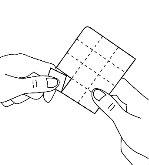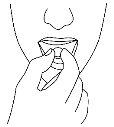
MIRTAZAPINE VIATRIS 15 mg ORALLY DISINTEGRATING TABLETS
Ask a doctor about a prescription for MIRTAZAPINE VIATRIS 15 mg ORALLY DISINTEGRATING TABLETS

How to use MIRTAZAPINE VIATRIS 15 mg ORALLY DISINTEGRATING TABLETS
Introduction
Package Leaflet: Information for the Patient
Mirtazapine Flas Viatris 15 mg Orodispersible Tablets EFG
Read the entire package leaflet carefully before starting to take this medication, as it contains important information for you.
- Keep this package leaflet, as you may need to read it again.
- If you have any questions, consult your doctor or pharmacist.
- This medication has been prescribed to you only, and you should not give it to others, even if they have the same symptoms as you, as it may harm them.
- If you experience side effects, consult your doctor or pharmacist, even if they are not listed in this package leaflet. See section 4.
Contents of the Package Leaflet
- What is Mirtazapine Flas Viatris and what is it used for
- What you need to know before taking Mirtazapine Flas Viatris
- How to take Mirtazapine Flas Viatris
- Possible side effects
- Storage of Mirtazapine Flas Viatris
- Contents of the pack and further information
1. What is Mirtazapine Flas Viatris and what is it used for
Mirtazapine Flas Viatris belongs to the group of medications called antidepressants.
Mirtazapine Flas Viatris is used to treat depression in adults.
2. What you need to know before taking Mirtazapine Flas Viatris
Do not takeMirtazapine Flas Viatris:
- If you are allergic to mirtazapine or any of the other components of this medication (listed in section 6).
- If you are taking or have recently taken (in the last two weeks) medications called monoamine oxidase inhibitors (MAOIs).
Warnings and precautions
Do not take or consult your doctor before starting to take mirtazapine:
If you have ever suffered from a severe skin rash or skin peeling, blisters, or sores in the mouth after taking mirtazapine or other medications.
Be particularly cautious with mirtazapine:
Severe skin reactions, such as Stevens-Johnson syndrome (SJS), toxic epidermal necrolysis (TEN), and drug reactions with eosinophilia and systemic symptoms (DRESS), have been reported with the use of mirtazapine. Discontinue use and seek immediate medical attention if you notice any of the symptoms described in section 4 related to these severe skin reactions.
If you have ever suffered from severe skin reactions, do not restart treatment with mirtazapine.
Children and adolescents
Mirtazapine should not normally be used in the treatment of children and adolescents under 18 years of age, as its efficacy has not been demonstrated. At the same time, you should be aware that in patients under 18 years of age, there is a higher risk of adverse effects such as suicidal attempts, suicidal ideation, and hostility (predominantly aggression, confrontational behavior, and irritation) when taking this class of medications. Nevertheless, your doctor may prescribe mirtazapine to patients under 18 years of age when they decide what is best for the patient. If your doctor has prescribed mirtazapine to a patient under 18 years of age and you wish to discuss this decision, please return to your doctor. You should inform your doctor if any of the symptoms mentioned above appear or worsen in patients under 18 years of age who are taking mirtazapine. The long-term safety effects related to growth, maturity, and development of knowledge and behavior of mirtazapine in this age group are still unknown. Additionally, a significant weight gain has been observed in this age group more frequently during treatment with mirtazapine compared to adults.
Suicidal thoughts and worsening of depression
If you are depressed, you may sometimes have thoughts of harming yourself or committing suicide.
This could worsen when you start taking antidepressants for the first time, as these medications usually take two weeks or sometimes more to take effect.
You may be more prone to thinking this way:
- If you have previously had suicidal thoughts or thoughts of harming yourself.
- If you are a young adult. Clinical trial information has shown an increased risk of suicidal behavior in adults under 25 years of age with psychiatric disorders who are being treated with an antidepressant.
If you have thoughts of harming yourself or committing suicide at any time, consult your doctor or go to a hospital immediately.
It may be helpful to tell a relative or close friendthat you are depressed, and ask them to read this package leaflet. You can ask them to tell you if they think your depression is worsening, or if they are concerned about changes in your behavior.
Consult your doctor or pharmacist before taking mirtazapine if you have or have ever experienced any of the following disorders:
- Seizures(epilepsy).
- Liver diseases, including jaundice.
- Kidney diseases.
- Heart diseaseor family history of heart disease, including certain types of heart conditions that can change the heart rhythm, a recent heart attack, heart failure, or if you are taking certain medications that can affect the heart rhythm.
- Low blood pressure.
- Schizophrenia.
- Bipolar disorder(alternating periods of euphoria/hyperactivity and periods of depression).
- Diabetes(you may need to adjust your insulin or other antidiabetic medication doses).
- Eye diseases, such as increased pressure in the eye (glaucoma).
- Difficulty urinating, which may be due to an enlarged prostate.
Elderly people
- If you are an elderly person. You may be more sensitive to the adverse effects of antidepressant medications.
During treatment
Consult your doctor:
- If signs of infection appear, such as high fever, sore throat, and sores in the mouth.
In rare cases, these symptoms can be signs of alterations in blood cell production in the bone marrow. Although rare, these symptoms usually appear 4-6 weeks after starting treatment.
Other medications and Mirtazapine Flas Viatris
Do not take Mirtazapine Flas Viatriswith:
- Monoamine oxidase inhibitors (MAOIs). Also, do not take mirtazapine during the two weeks after stopping MAOIs. If you stop taking mirtazapine, do not take MAOIs during the two weeks following. Examples of MAOIs are moclobemide, tranylcypromine (both are antidepressants), and selegiline (for Parkinson's disease).
Tell your doctor or pharmacist if you are taking, have recently taken, or may need to take any other medication, including those obtained without a prescription, especially any of the following:
- Antidepressants such as selective serotonin reuptake inhibitors (SSRIs)(e.g., citalopram), venlafaxine, and L-tryptophan or triptans(used to treat migraines; e.g., sumatriptan), tramadol(for pain), linezolid(an antibiotic), lithium(used to treat certain psychiatric disorders), methylene blue(used to treat toxemia), and St. John's Wort preparations(Hypericum perforatum) (herbal remedy for depression). In very rare cases, mirtazapine alone or with these medications can lead to a condition called serotonin syndrome. Some signs of this syndrome are: fever, sweating, palpitations, diarrhea, muscle contractions (involuntary), shivering, exaggerated reflexes, agitation, mood changes, and loss of consciousness. If you experience a combination of these signs, consult your doctor immediately.
- Anxiety or insomnia medicationssuch as benzodiazepines; e.g., diazepam or chlordiazepoxide.
- Schizophrenia medicationssuch as olanzapine.
- Allergy medicationssuch as cetirizine.
- Strong pain medicationssuch as morphine.
When combined with these medications, mirtazapine can increase the drowsiness caused by these medications.
These medications increase the amount of mirtazapine in the blood:
- Infection medications:medications for bacterial infections (such as erythromycin); medications for fungal infections (such as ketoconazole); medications for HIV/AIDS (such as HIV protease inhibitors, e.g., ritonavir, nelfinavir); medications for depression(such as nefazodone), and medications for stomach ulcers(such as cimetidine). If taken with mirtazapine, these medications may increase the amount of mirtazapine in the blood. Inform your doctor if you are taking these medications. It may be necessary to decrease the dose of mirtazapine or increase it again when stopping these medications.
These medications decrease the amount of mirtazapine in the blood:
- Carbamazepine and phenytoin, medications for epilepsy, rifampicin, medication for tuberculosis. If taken with mirtazapine, these medications may reduce the amount of mirtazapine in the blood. Inform your doctor if you are taking these medications. It may be necessary to increase the dose of mirtazapine or decrease it again when stopping these medications.
- Warfarin, a medication to prevent blood clotting. Mirtazapine may increase the effects of warfarin on the blood. Inform your doctor if you are taking this medication. In case of taking them together, it is recommended that your doctor performs blood tests.
Taking Mirtazapine Flas Viatris with alcohol
You may feel drowsy if you drink alcohol while being treated with mirtazapine.
It is recommended not to drink any alcohol.
Pregnancy and breastfeeding
Limited experience with the administration of mirtazapine to pregnant women does not indicate an increased risk of congenital malformations. However, caution should be exercised if used during pregnancy.
If you are taking mirtazapine and become pregnant or plan to become pregnant, consult your doctor if you can continue taking mirtazapine. If you use mirtazapine until or shortly before delivery, your baby will be examined for possible adverse effects.
Make sure your midwife and/or doctor know that you are being treated with mirtazapine.
Similar medications (SSRIs), taken during pregnancy, may increase the risk of a serious condition in newborns, called persistent pulmonary hypertension of the newborn (PPHN), making the baby breathe faster and appear blue. These symptoms usually start within the first 24 hours after birth. If this occurs, you should contact your midwife and/or doctor immediately.
Consult your doctor if you can breastfeed while taking mirtazapine.
If you are pregnant or breastfeeding, think you may be pregnant, or plan to become pregnant, consult your doctor or pharmacist before using this medication.
Driving and using machines
Mirtazapine may affect your concentration or alertness. Make sure your abilities are not affected before driving or using machinery.
Mirtazapine Flas Viatris contains aspartame
This medication contains 3 mg of aspartame in each 15 mg orodispersible tablet. Aspartame is a source of phenylalanine. It may be harmful if you have phenylketonuria (PKU), a rare genetic disorder in which phenylalanine accumulates because the body cannot eliminate it properly.
.
3. How to take Mirtazapine Flas Viatris
Follow the administration instructions of this medication exactly as indicated by your doctor or pharmacist. In case of doubt, consult your doctor or pharmacist again.
How much to take
The recommended dose is 15 or 30 mg per day.Your doctor may recommend increasing the dose after a few days to the amount that is best for you (between 15 and 45 mg per day). The recommended dose is usually the same for all ages. However, if you are an elderly person and have kidney or liver disease, your doctor may change the dose.
When to take it
Take Mirtazapine Flas Viatris at the same time every day.
It is best to take the dose of mirtazapine once before bedtime. However, your doctor may recommend that you divide your dose of mirtazapine into morning and bedtime doses.
The highest dose should be taken before bedtime.
Take the orodispersible tablet as follows
The tablets are taken orally.
- Do not press the orodispersible tablet
To avoid crushing the orodispersible tablet, do not press the blister (Figure A).

Fig. A.
- Separate a blister
Each blister pack contains six blisters, which are separated by perforations. Separate a blister by following the perforation lines (Figure 1).

Fig. 1.
- Open the blister
Carefully remove the foil, starting from the corner (Figure 2).
Fig. 2.

- Remove the orodispersible tablet
Remove the orodispersible tablet with dry hands and place it on your tongue (Figure 3).

Fig. 3.
It will dissolve quickly and can be swallowed without water.
When can you expect to feel better
Normally, mirtazapine will start to take effect after 1 or 2 weeks, and after 2 to 4 weeks, you may start to feel better. It is essential that during the first weeks of treatment, you talk to your doctor about the effects of mirtazapine:
- Between 2 and 4 weeks after starting to take mirtazapine, talk to your doctor about how this medication has affected you.
If you still do not feel better, your doctor may prescribe a higher dose. In that case, talk to your doctor again after another 2-4 weeks.
Normally, you will need to take mirtazapine until the symptoms of depression have disappeared for 4-6 months.
Use in children and adolescents under 18 years of age:
Mirtazapine should not be used in children and adolescents under 18 years of age (see section 2 "Children and adolescents under 18 years of age").
If you take more Mirtazapine Flas Viatris than you should
If you or someone else takes too much mirtazapine, consult a doctor immediately. You can also call the Toxicology Information Service, phone number 91 562 04 20.
The most likely symptoms of a mirtazapine overdose (without other medications or alcohol) are drowsiness, disorientation, changes in heart rhythm (irregular heartbeat, rapid heartbeat), or fainting, which can be symptoms of a potentially life-threatening condition known as torsades de pointes.
If you forget to take Mirtazapine Flas Viatris
If you have to take your dose once a day
- If you forget to take your dose of mirtazapine, do not take the missed dose. Skip it and take your usual dose the next day.
Do not take a double dose to make up for missed doses.
If you have to take your dose twice a day
- If you have forgotten the morning dose, simply take it with the evening dose.
- If you have forgotten the evening dose, do not take it the next morning; skip it and continue with your normal doses in the morning and evening.
- If you have forgotten both doses, do not try to make them up. Skip both doses and the next day continue with your normal dose in the morning and evening.
If you stop taking Mirtazapine Flas Viatris
Stop taking mirtazapine only after consulting your doctor.
If you stop too soon, depression may recur. When you feel better, talk to your doctor. Your doctor will decide when you can stop treatment.
Do not stop taking mirtazapine abruptly, even if depression has disappeared. If you stop taking mirtazapine abruptly, you may feel unwell, dizzy, agitated, or anxious, and have headaches. These symptoms can be avoided by gradually stopping treatment. Your doctor will indicate how to gradually decrease the dose.
If you have any other questions about the use of this medication, ask your doctor or pharmacist.
4. Possible Adverse Effects
Like all medicines, this medicine can cause adverse effects, although not all people suffer from them.
If you experience any of the following,stop takingmirtazapine and inform your doctor immediately or go to the emergency department of the nearest hospital:
Rare(may affect up to 1 in 1,000 people)
- Pancreatitis. This produces moderate to severe pain in the stomach that spreads to the back.
Frequency Not Known(cannot be estimated from the available data)
- Epileptic seizure (convulsions).
- Yellowing of the eyes or skin; may suggest liver function disorders (jaundice).
- Combination of symptoms such as fever, sweating, palpitations, diarrhea, muscle contractions (involuntary), chills, exaggerated reflexes, agitation, mood changes, and loss of consciousness. In very rare cases, these symptoms can be signs of a disorder called "serotonin syndrome".
- Thoughts of suicide or self-harm, or attempted suicide.
- Red patches on the torso, like circumscribed or circular macules, often with blisters in the center, skin peeling, ulcers in the mouth, throat, nose, genitals, and eyes. These severe skin eruptions can be preceded by fever and flu-like symptoms (Stevens-Johnson syndrome, toxic epidermal necrolysis).
- Generalized erythema, elevated body temperature, and enlarged lymph nodes (DRESS syndrome or drug hypersensitivity syndrome).
- Symptoms of infection such as high sudden fever, sore throat, and ulcers in the mouth (agranulocytosis).
- Mirtazapine may cause alterations in blood cell production (bone marrow depression). Some people become less resistant to infections because mirtazapine can cause a temporary decrease in white blood cells (granulocytopenia). In rare cases, mirtazapine can also cause a decrease in red and white blood cells and platelets (aplastic anemia), a decrease in platelets (thrombocytopenia), or an increase in the number of white blood cells in the blood (eosinophilia).
- Muscle tissue rupture, which causes muscle pain, sensitivity, stiffness, or weakness, and darkening or discoloration of the urine (rhabdomyolysis).
- Difficulty urinating or emptying the bladder.
- Lower than normal sodium levels in the blood, which can make you feel weak or confused, accompanied by muscle pain. This can be due to inadequate secretion of ADH, a hormone that makes the body retain water and dilute the blood, reducing the amount of sodium.
Other Possible Adverse Effects
Very Common(may affect more than 1 in 10 people)
- Increased appetite or weight gain.
- Somnolence.
- Headache.
- Dry mouth.
Common(may affect up to 1 in 10 people)
- Lethargy.
- Dizziness.
- Tremor.
- Feeling of discomfort (nausea).
- Diarrhea.
- Discomfort (vomiting).
- Constipation.
- Hives or skin rashes (exanthema).
- Joint pain (arthralgia) or muscle pain (myalgia).
- Back pain.
- Dizziness or fainting when standing up quickly (orthostatic hypotension).
- Swelling (usually in ankles or feet) due to fluid retention (edema).
- Fatigue.
- Vivid dreams.
- Confusion.
- Anxiety.
- Difficulty sleeping.
- Memory problems, which in most cases were resolved when treatment was discontinued.
Uncommon(may affect up to 1 in 100 people)
- Feeling of euphoria or being emotionally excited (mania).
- Strange sensation in the skin, such as burning, pricking, tingling, or numbness (paresthesia).
- Involuntary movements of agitation of the legs during sleep.
- Fainting (syncope).
- Feeling of numbness in the mouth (oral hypoesthesia).
- Low blood pressure.
- Nightmares.
- Agitation.
- Seeing, feeling, or hearing things that do not exist (hallucinations).
- Inability to remain still.
Rare(may affect up to 1 in 1,000 people)
- Tics or muscle contractions (myoclonus).
- Aggressive behavior.
- Increased liver enzymes (observed through blood tests).
Frequency Not Known(cannot be estimated from the available data)
- Abnormal sensations in the mouth, such as burning, stinging, tingling, or numbness (oral paresthesia).
- Swelling in the mouth (oral edema).
- Low sodium levels in the blood (hyponatremia) (observed through blood tests).
- Increased creatine kinase levels in the blood (observed through blood tests).
- Increased salivation.
- Sleepwalking.
- Difficulty speaking.
- Increased blood concentration of the hormone prolactin (hyperprolactinemia, which includes symptoms of breast enlargement or milky discharge from the nipples).
- Prolonged and painful erection of the penis.
Other Adverse Effects in Children and Adolescents
The following adverse events have been observed in children under 18 years of age in clinical trials: hives and increased triglycerides in the blood.
Reporting of Adverse Effects
If you experience any type of adverse effect, consult your doctor or pharmacist, even if it is a possible adverse effect that is not listed in this prospectus. You can also report them directly through the Spanish Pharmacovigilance System for Human Use Medicines: https://www.notificaram.es. By reporting adverse effects, you can contribute to providing more information on the safety of this medicine.
5. Storage of Mirtazapine Flas Viatris
Keep this medicine out of sight and reach of children.
Do not use this medicine after the expiration date that appears on the packaging and on the blister after CAD or EXP. The expiration date is the last day of the month indicated.
This medicine does not require special storage conditions.
Medicines should not be thrown away through the sewers or in the trash. Deposit the packaging and medicines that you no longer need in the SIGRE Point of the pharmacy. In case of doubt, ask your pharmacist how to dispose of the packaging and medicines that you no longer need. This way, you will help protect the environment .
6. Package Contents and Additional Information
Composition of Mirtazapine Flas Viatris
The active ingredient is mirtazapine.
Each orodispersible tablet contains 15 mg of mirtazapine.
The other components are: crospovidone, mannitol (E-421), microcrystalline cellulose, aspartame (E-951) (see section 2 "Mirtazapine Flas Viatris contains aspartame"), strawberry and guarana flavor, peppermint flavor, colloidal anhydrous silica, and magnesium stearate.
Appearance of the Product and Package Contents
Mirtazapine Flas Viatris tablets are white, round, and marked with "A" on one side and the code "36" on the other.
Mirtazapine Flas Viatris is available in blisters that contain: 6, 12, 18, 30, 48, 60, 90, 96, and 100 orodispersible tablets.
Only some package sizes may be marketed.
Marketing Authorization Holder:
Viatris Limited
Damastown Industrial Park
Mulhuddart, Dublin 15
Dublin
Ireland
Manufacturer:
McDermott Laboratories Ltd T/A Gerard Laboratories
35/36 Baldoyle Industrial Estate, Grange Road, Dublin 13
Ireland
or
Mylan Hungary Kft.
H-2900 Komárom,
Mylan utca 1,
Hungary
You can request more information about this medicine by contacting the local representative of the marketing authorization holder:
Viatris Pharmaceuticals, S.L.U.
C/ General Aranaz, 86
28027 - Madrid
Spain
This medicine is authorized in the Member States of the European Economic Area and in the United Kingdom (Northern Ireland) with the following names:
Denmark Mirtazapin Viatris 15 mg smeltetabletter
Spain Mirtazapina Flas Viatris 15 mg comprimidos bucodispersables EFG
Netherlands Mirtazapine SmeltTab Viatris 15 mg, orodispergeerbare tablet
Tablet
Italy Mirtazapina Mylan Generics Italia
Poland Mirtagen
Portugal Mirtazapina Mylan 15 mg comprimindo orodispersivel
United Kingdom (Northern Ireland) Mirtazapine 15 mg Orodispersible Tablets
Czech Republic Mirtazapina Viatris
Date of the Last Revision of this Prospectus:November 2022
Detailed information about this medicine is available on the website of the Spanish Agency for Medicines and Health Products (AEMPS) https://www.aemps.gob.es/.

How much does MIRTAZAPINE VIATRIS 15 mg ORALLY DISINTEGRATING TABLETS cost in Spain ( 2025)?
The average price of MIRTAZAPINE VIATRIS 15 mg ORALLY DISINTEGRATING TABLETS in December, 2025 is around 8.52 EUR. Prices may vary depending on the region, pharmacy, and whether a prescription is required. Always check with a local pharmacy or online source for the most accurate information.
- Country of registration
- Average pharmacy price8.52 EUR
- Active substance
- Prescription requiredYes
- Manufacturer
- This information is for reference only and does not constitute medical advice. Always consult a licensed doctor before taking any medication. Oladoctor is not responsible for medical decisions based on this content.
- Alternatives to MIRTAZAPINE VIATRIS 15 mg ORALLY DISINTEGRATING TABLETSDosage form: TABLET, 15 mgActive substance: mirtazapineManufacturer: Laboratorios Alter S.A.Prescription requiredDosage form: TABLET, 30 mgActive substance: mirtazapineManufacturer: Laboratorios Alter S.A.Prescription requiredDosage form: TABLET, 15 mgActive substance: mirtazapineManufacturer: Almus Farmaceutica S.A.U.Prescription required
Alternatives to MIRTAZAPINE VIATRIS 15 mg ORALLY DISINTEGRATING TABLETS in other countries
The best alternatives with the same active ingredient and therapeutic effect.
Alternative to MIRTAZAPINE VIATRIS 15 mg ORALLY DISINTEGRATING TABLETS in Poland
Alternative to MIRTAZAPINE VIATRIS 15 mg ORALLY DISINTEGRATING TABLETS in Ukraine
Online doctors for MIRTAZAPINE VIATRIS 15 mg ORALLY DISINTEGRATING TABLETS
Discuss dosage, side effects, interactions, contraindications, and prescription renewal for MIRTAZAPINE VIATRIS 15 mg ORALLY DISINTEGRATING TABLETS – subject to medical assessment and local rules.









